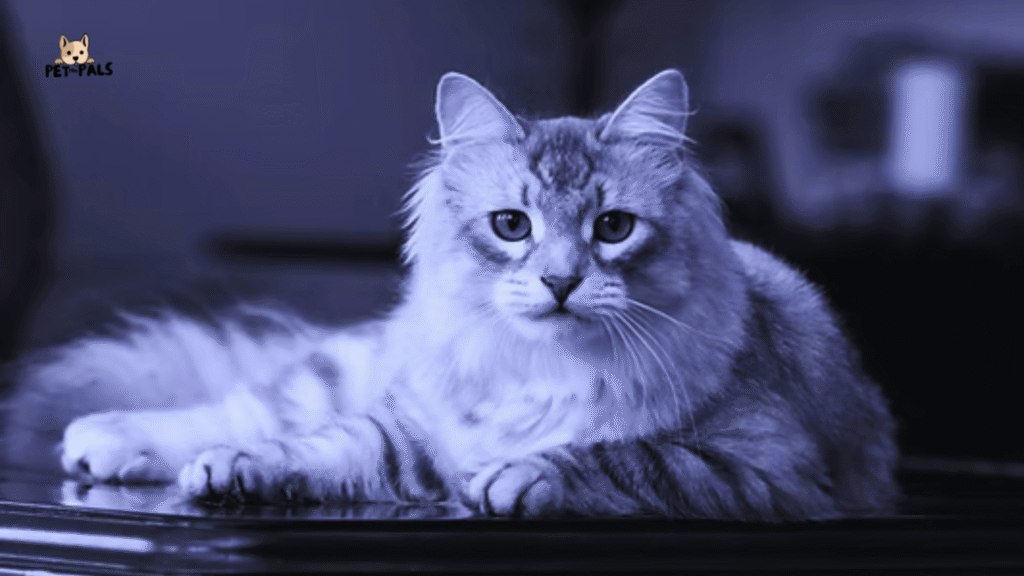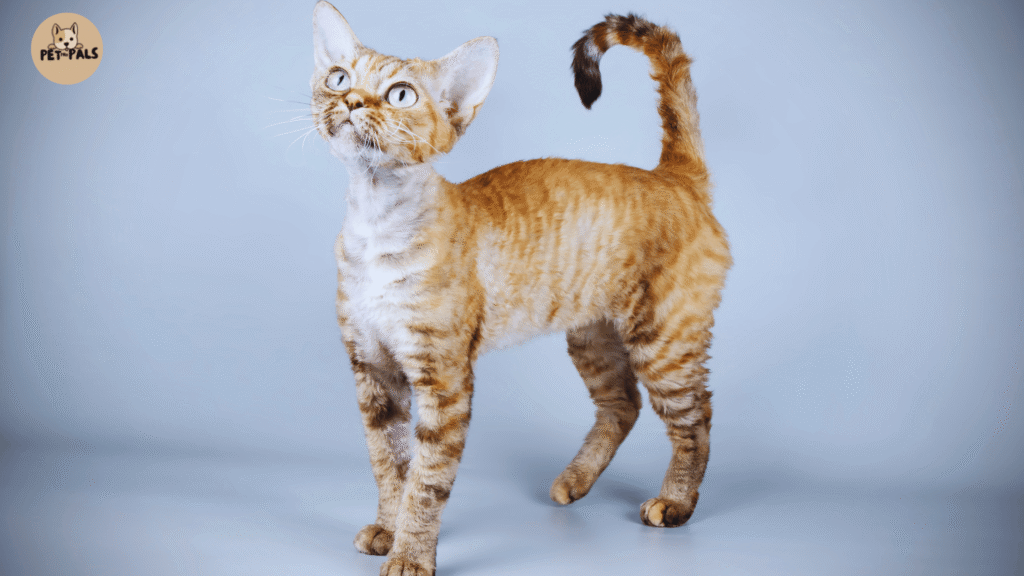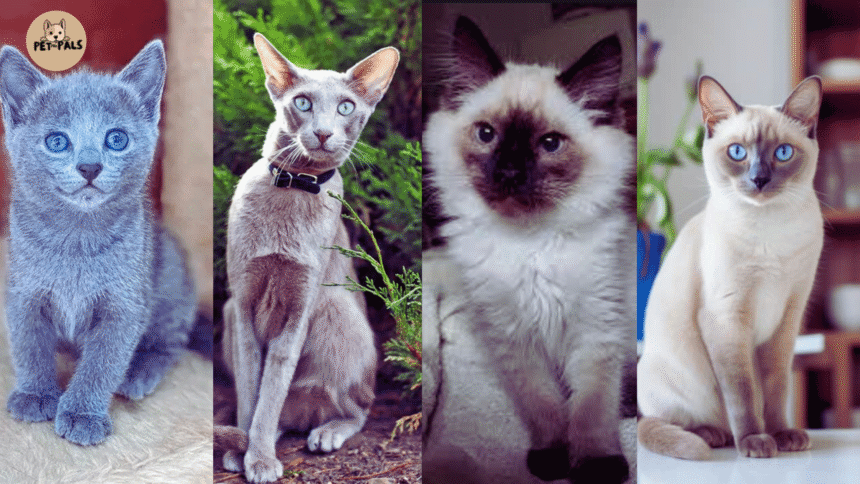Cats are beloved companions for millions around the world, but for roughly 10-20% of people worldwide who suffer from pet allergies, having a cat can mean constant sneezing, itchy eyes, and discomfort. Allergies to cats are mainly caused by proteins found in their saliva, skin, and fur, making it tough for many to share their homes with these furry friends.
The good news? Some cat breeds are considered hypoallergenic because they produce fewer of these allergy-triggering proteins. While no cat is 100% allergy-proof, certain breeds may help reduce your symptoms and let you enjoy feline company without the usual sniffles.
If you’re ready to find a cat that fits your allergies and your heart, keep reading for 12 breeds that could be just right for you.
What Does ‘Hypoallergenic Cat’ Actually Mean?
When we talk about hypoallergenic cats, what we mean is cats that produce fewer allergens the proteins that trigger allergic reactions in sensitive people. The main culprit behind cat allergies is a protein called Fel d 1, which is found in a cat’s saliva, skin (dander), and urine.
When cats groom themselves, they spread Fel d 1 onto their fur. As the fur and dander shed, this protein becomes airborne and can cause symptoms like sneezing, itchy eyes, and congestion in people with allergies. According to the American College of Allergy, Asthma & Immunology (ACAAI), Fel d 1 is the primary allergen responsible for most cat allergies.
Some cat breeds produce less Fel d 1 or have different types of fur that trap the allergen better, making them a better fit for allergy sufferers. These cats aren’t completely allergen-free, but they often cause fewer or milder reactions. That’s why these breeds are often called “hypoallergenic,” even though the term isn’t scientifically official.
12 Hypoallergenic Cat Breeds to Consider
Choosing a hypoallergenic cat isn’t just about picking a breed with a pretty name, it’s about finding one that naturally produces fewer allergy-causing proteins or has traits that help reduce allergen spread. Factors like the cat’s coat type, grooming habits, and Fel d 1 protein levels all play a role.
These breeds have been recognized by veterinarians and allergy experts for being generally easier on allergy sufferers. However, every person’s sensitivity is different, so spending time with a cat before adopting is crucial.
With that in mind, here are 12 hypoallergenic cat breeds you might want to consider for a sneeze-friendly furry companion.
1. Siberian Cat

Why it’s considered hypoallergenic:
Despite its thick triple coat, the Siberian Cat surprisingly produces lower levels of the Fel d 1 protein, making it a better option for allergy sufferers. Some studies suggest that many Siberians carry a genetic variation that naturally limits allergen production.
Temperament:
Siberians are known for being gentle, playful, and affectionate. They’re often described as “dog-like” because they follow their humans around and love interactive play.
Grooming needs:
Because of their long, dense coat, weekly brushing is a must to prevent matting, especially during seasonal shedding. However, they tend to have a naturally clean coat and are good self-groomers.
Suitability for allergy-prone people:
If you’re sensitive but not severely allergic, the Siberian could be a fantastic companion. Their lower allergen levels, combined with their sweet personality, make them one of the most popular hypoallergenic choices.
2. Devon Rex Cat

Why it’s considered hypoallergenic:
The Devon Rex has a very short, fine coat and produces less dander compared to most breeds. With minimal shedding and low grooming needs, there’s simply less fur and saliva spreading around, which can mean fewer allergens in the home.
Temperament:
Devons are mischievous, energetic, and people-loving. They thrive on attention and love being involved in whatever you’re doing; think of them as your tiny, playful shadow.
Grooming needs:
Very minimal! Their short coat doesn’t need much brushing,a gentle wipe with a damp cloth occasionally is usually enough. Over-brushing can irritate their delicate fur.
Suitability for allergy-prone people:
With their light coat and low allergen-spreading habits, the Devon Rex is a top choice for mild allergy sufferers who also want a lively, entertaining companion.
3. Cornish Rex Cat
Why it’s considered hypoallergenic:
The Cornish Rex has only the soft undercoat (called the down coat) and lacks the outer guard hairs most cats have. This means less shedding and dander, which can help reduce allergens in your home. While they still produce Fel d 1, their unique coat helps limit its spread.
Temperament:
These cats are fun-loving, curious, and incredibly active. They’re known for their playful, kitten-like behavior well into adulthood and love engaging with people and exploring every corner of the house.
Grooming needs:
Very low maintenance. Their fine coat doesn’t mat or shed heavily, so occasional gentle wiping or brushing is enough. However, their skin can get oily, so they may need the occasional bath.
Suitability for allergy-prone people:
Thanks to their minimal fur and reduced shedding, Cornish Rex cats are often well-tolerated by those with mild allergies, especially when combined with regular cleaning and air filtration at home.
4. Balinese Cat
Why it’s considered hypoallergenic:
The Balinese is often nicknamed the “long-haired Siamese,” but don’t let the fluffy coat fool you ,they’re known to produce significantly lower levels of the Fel d 1 protein, making them one of the top recommended breeds for allergy sufferers.
Temperament:
Balinese cats are intelligent, vocal, and extremely affectionate. They love to communicate with their humans and often bond deeply with one or two people in the home.
Grooming needs:
Despite their longer coat, Balinese cats rarely mat and shed less than expected. A weekly brushing usually keeps their silky fur in top condition.
Suitability for allergy-prone people:
If you’re looking for a friendly, hypoallergenic cat with a bit of elegance, the Balinese could be a perfect fit. Their low Fel d 1 production, combined with a light-shedding coat, makes them one of the better options for people with cat allergies.
5. Sphynx Cat
Why it’s considered hypoallergenic:
The Sphynx is famous for being hairless, which means there’s no fur to trap allergens and shed around your home. While they still produce the Fel d 1 protein, the absence of a coat helps reduce how much of it spreads through dander.
Temperament:
Sphynx cats are outgoing, cuddly, and love human attention. They’re curious and social, always up for playtime or snuggling under a blanket.
Grooming needs:
No fur doesn’t mean no grooming! Their skin produces natural oils that would normally be absorbed by fur, so they need regular baths (about once a week) to stay clean and healthy.
Suitability for allergy-prone people:
Although not truly allergen-free, Sphynx cats are often a good option for people with mild to moderate cat allergies, as long as you’re committed to their skincare routine and cleanliness.
6. Oriental Shorthair Cat
Why it’s considered hypoallergenic:
The Oriental Shorthair has a sleek, short coat that sheds very little and is easy to maintain, meaning fewer allergens are spread through the environment. They also tend to produce slightly less Fel d 1 protein than some other breeds, making them more manageable for allergy sufferers.
Temperament:
These cats are alert, talkative, and extremely affectionate. Much like their Siamese relatives, they love attention, follow their owners around, and are always up for a chat.
Grooming needs:
Minimal! Their smooth, close-lying coat requires just occasional brushing to remove loose hairs and keep their coat shiny.
Suitability for allergy-prone people:
With their low-shedding coat and moderate allergen levels, Oriental Shorthairs are a great choice for people who want a sociable, energetic cat without triggering constant sneezing.
7. Russian Blue Cat
Why it’s considered hypoallergenic:
The Russian Blue is known to produce lower amounts of the Fel d 1 protein, which is the main allergen responsible for triggering cat allergies. In addition, their dense, plush double coat traps allergens, keeping them from spreading as easily through your home.
Temperament:
Russian Blues are gentle, quiet, and slightly reserved, especially around strangers. However, they’re deeply loyal and affectionate with their chosen humans and enjoy a calm, predictable environment.
Grooming needs:
Despite their thick fur, they’re low maintenance. A weekly brushing is usually enough to keep their coat healthy and reduce loose hair.
Suitability for allergy-prone people:
Thanks to their low Fel d 1 production and allergen-trapping coat, Russian Blues are often a good match for allergy sufferers looking for a more tranquil, elegant companion.
8. Bengal Cat
Why it’s considered hypoallergenic:
The Bengal cat has a unique short, pelt-like coat that requires little grooming and sheds far less than most breeds. Less shedding means fewer allergens in the air, and their grooming habits help keep dander to a minimum.
Temperament:
Bengals are active, athletic, and highly intelligent. They love to climb, explore, and play — often compared to having a mini leopard in the house. They’re also affectionate and bond closely with their families.
Grooming needs:
Minimal. Bengals have a glossy, low-maintenance coat that usually only needs occasional brushing to remove loose hair.
Suitability for allergy-prone people:
While Bengals still produce Fel d 1, their low-shedding coat and tidy habits can make them easier to tolerate for people with mild allergies, especially if you keep up with regular cleaning routines.
9. Siamese Cat
Why it’s considered hypoallergenic:
Siamese cats are thought to produce lower levels of Fel d 1, the main allergenic protein in cats. Their short, fine coat also means there’s less hair to trap and spread allergens.
Temperament:
Siamese cats are vocal, social, and incredibly intelligent. They love attention and thrive in busy homes where they can interact with people and even other pets.
Grooming needs:
Very low. Their sleek, low-shedding coat typically needs just an occasional brush or wipe-down.
Suitability for allergy-prone people:
Their low-maintenance coat and reduced allergen output make Siamese cats a potential match for allergy sufferers, especially those looking for an outgoing, talkative companion.
10. Javanese Cat
Why it’s considered hypoallergenic:
Although they have a longer coat, Javanese cats lack an undercoat, which greatly reduces shedding and dander. They’re also believed to produce less Fel d 1 protein than average.
Temperament:
Smart, loving, and highly trainable, Javanese cats are active and emotionally connected to their people. They’ll follow you around the house and respond well to interactive play.
Grooming needs:
Despite their silky fur, grooming is easy. Their single-layered coat doesn’t mat and needs only occasional brushing.
Suitability for allergy-prone people:
With no heavy shedding and a reputation for lower allergen production, Javanese cats can be a solid choice for individuals with moderate cat allergies who also want a clever, loyal pet.
11. Burmese Cat
Why it’s considered hypoallergenic:
Burmese cats have a short, satiny coat that lies close to the body and sheds minimally, which can help reduce allergen exposure in the home. They may also produce less Fel d 1 protein compared to more allergenic breeds.
Temperament:
Burmese cats are affectionate, people-oriented, and endlessly playful. They often behave more like dogs following their owners, seeking cuddles, and happily engaging in games.
Grooming needs:
Very low. Their fine, low-shedding coat only needs a quick brush once in a while to stay in good condition.
Suitability for allergy-prone people:
Their low-shedding coat and gentle nature make Burmese cats a solid choice for people with mild allergies who want a snuggly, friendly feline companion.
12. Ocicat Cat
Why it’s considered hypoallergenic:
Despite their wild, spotted look, Ocicats have a short, tight coat that sheds very little, helping to minimize allergen spread. They’re known to produce lower amounts of Fel d 1 protein, making them a reasonable choice for allergy sufferers.
Temperament:
Ocicats are friendly, outgoing, and highly social. They enjoy interacting with their families and get along well with children and other pets.
Grooming needs:
Minimal grooming is needed, just an occasional brushing to keep their sleek coat shiny and healthy.
Suitability for allergy-prone people:
If you want an active, playful cat with striking looks that’s easier on allergies, the Ocicat is a great option to consider.
Tips for Living With a Cat If You Have Allergies
Living with a cat when you have allergies can be tricky, but with a few smart habits, you can reduce your symptoms and still enjoy feline companionship.
Clean your home frequently: Regular vacuuming with a HEPA filter vacuum and dusting can help remove cat dander from floors, furniture, and bedding. Wash your cat’s bedding often, too.
Use air purifiers: High-quality air purifiers with HEPA filters can capture airborne allergens and improve indoor air quality, making it easier to breathe.
Bathe and groom your cat regularly: Bathing your cat every few weeks can reduce the amount of allergen-carrying dander. If your cat tolerates it, gentle brushing helps remove loose fur and dander, too.
Wash your hands and avoid face contact: After petting your cat, wash your hands thoroughly. Try to avoid touching your face or rubbing your eyes, which can trigger allergy symptoms.
Is a Hypoallergenic Cat Right for You?
Choosing a cat when you have allergies isn’t always straightforward. While hypoallergenic breeds can help reduce symptoms, it’s important to spend time with different cats before making a decision. This way, you can see how your body reacts and find a feline friend who truly fits your lifestyle.
Don’t hesitate to talk with your doctor or allergist before bringing a cat home. They can offer personalized advice to help you manage your allergies effectively.
Remember, no cat is perfect, but with love, care, and a little preparation, you can build a joyful, allergy-friendly bond with your new furry companion.
FAQs About Hypoallergenic Cats
Can air purifiers help with cat allergies?
Yes. HEPA air purifiers are highly effective at removing airborne allergens and can make a big difference for allergy sufferers living with cats.
Should I get tested before adopting a cat?
Absolutely. Talk to your doctor or allergist and consider allergy testing to understand your sensitivity. Spending time with a cat breed beforehand is also a smart move.
Do short-haired cats cause fewer allergies?
Not necessarily. Allergies are caused by proteins, not the hair itself. However, short-haired or low-shedding breeds may spread fewer allergens around the house.
Can grooming help reduce cat allergies?
Yes. Regular grooming and bathing can significantly reduce the amount of loose fur and dander, the primary carriers of allergens in your home.
Which cat breed produces the least Fel d 1 protein?
While there’s no single “lowest” producer, breeds like the Siberian, Balinese, and Russian Blue are known to produce less Fel d 1, making them popular among allergy-prone owners.
Are hypoallergenic cats completely allergy-free?
No, hypoallergenic cats are not 100% allergy-free. They simply produce lower levels of allergens, particularly the Fel d 1 protein found in saliva, dander, and urine. Some allergy sufferers may still react, but the symptoms are often milder.

